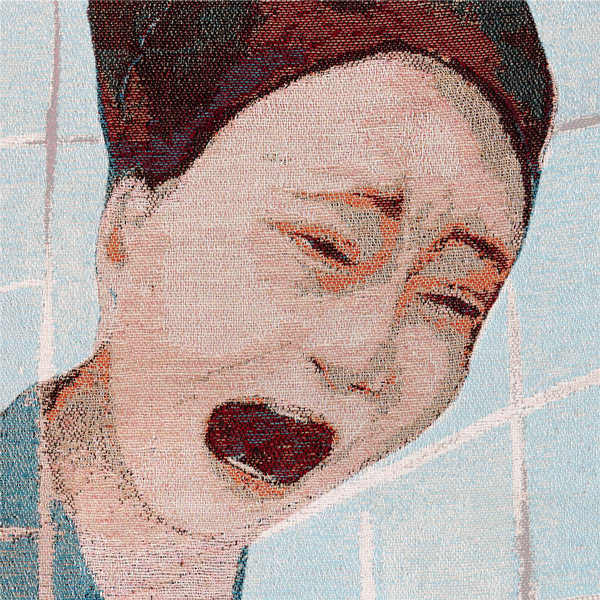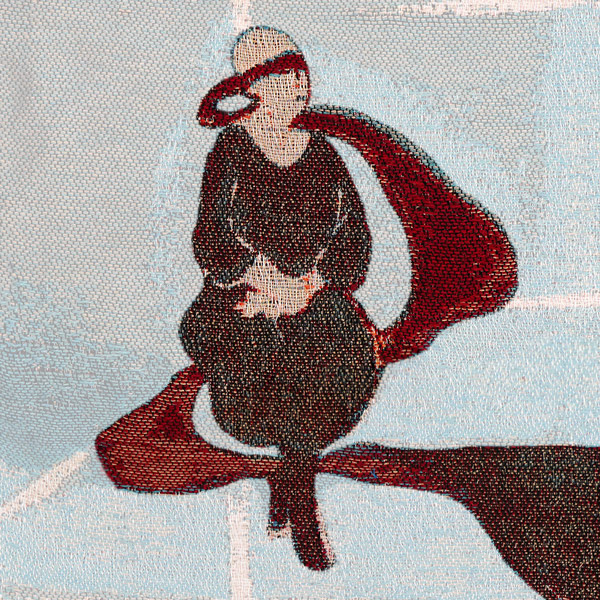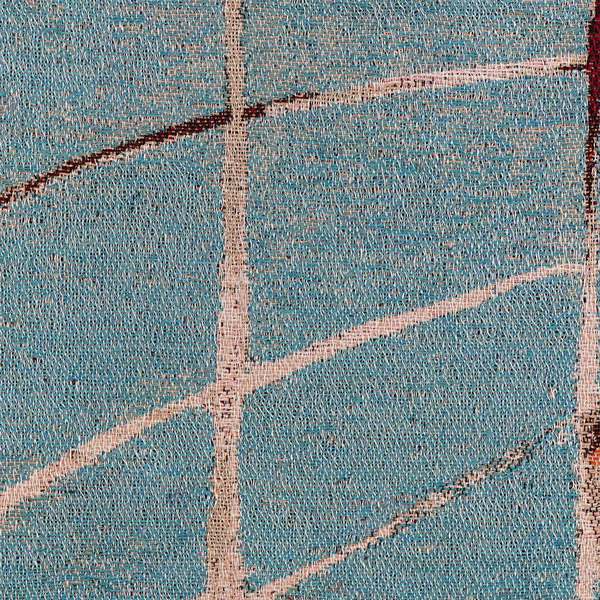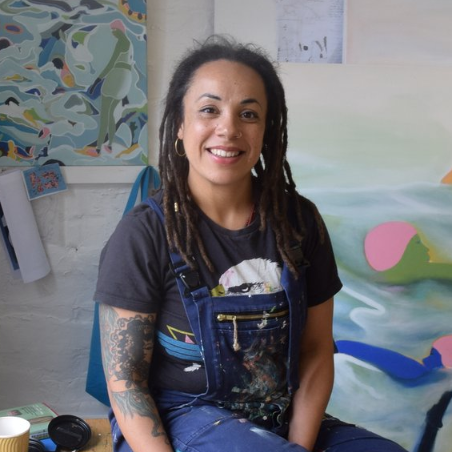Eyes Forced Shut
This work is about the disempowerment and loss of freedoms experienced by patients and their relatives in care homes. Of them not being able to see and how isolation kills the vulnerable.
Created by Catherine Chinatree, following conversations with members of Care Campaign for the Vulnerable.
The image is a pale blue-green with a grid of vertical and horizontal brown lines drawn roughly. In the foreground are the head and shoulders of a woman with dark brown hair. Her mouth is open, as if letting out a cry of anguish and despair. Her face is contorted. Her hair spirals up to the top left corner where it becomes a red swirl surrounding a second, smaller figure, of an elderly woman. She is seated alone, looking to the right, with her hands folded in her lap. The red swirl eventually becomes a blindfold in a reference to the title of the piece.
This work is about the disempowerment and loss of freedoms experienced by patients and their relatives in care homes. Of them not being able to see and how isolation kills the vulnerable.
It was created by Catherine Chinatree, following conversations with members of Care Campaign for the Vulnerable. The title is “Eyes Forced Shut”.
Discover the details
Click on a thumbnail from the tapestry to reveal more details from the artist.



Screaming into the void
“The main subject reflects the anguish and pain caused to the relatives through the emotion of screaming. One member of the group described her lived experience of the situation as going out to a field to scream at nothing. The group spoke about how, more often than not, the women would voice their grief through screaming / crying, whereas the male relatives tended to be quieter and more withdrawn, but no less despairing.”
Freedom and dignity
“Another theme was the indignation and loss of freedoms, represented by not being able to see, and the resulting disconnect from loved ones. The eyes of the figure in the top left corner, representing the relative in the care home, are hidden to convey this sense of powerlessness, and removal of dignity”
Behind the barrier
“This grid-like effect is in response to the metaphorical barriers that were put up when visiting; how they could not properly see family members and they did not know fully what was happening. It also speaks to the physical barriers - talking to relatives through fences, windows and reinforced glass - which only added to the distress and helplessness”
What this panel represents to us
Jane Freeman, Care Campaign for the VulnerableI was overwhelmed with emotion when I first saw the piece, and I am confident this will stir conversation, Hearing everyone’s experiences was harrowing, but in a strange way made me feel connected, less isolated and less alone - and I hope this is the case for others.
Amanda Hunter, Care Campaign for the VulnerableFor me, Catherine's artwork is vividly powerful, and while no artwork could ever fully convey the depths of anguish, pain and suffering experienced, or the sorrow, despair, and anger I and thousands of our loved ones and families felt, it captures the essence of some of those emotions. It's been harrowing to hear everyone's experiences, but equally it made me feel a sense of solidarity and a determination to carry on fighting for justice. It is not enough for our silent scream to be 'seen'; it must be heard, and acted upon


About the artist
Catherine Chinatree
Catherine is a Margate-based multidisciplinary artist who draws on her Welsh, Caribbean and Irish heritage to explore a representational idea of shared “reality” through her work – with a focus on identity, dualism, and cultural fluidity.
She studied at the Wimbledon College of Arts, was awarded a Ferdynand Zweig Arts travel Scholarship, and set up a collaborative engagement project between the UK and Havana, Cuba. She has also been shortlisted for the Mercury Music Arts Prize, Nasty Woman NYC and The Griffin x Elephant New Graduates Arts Prize.
